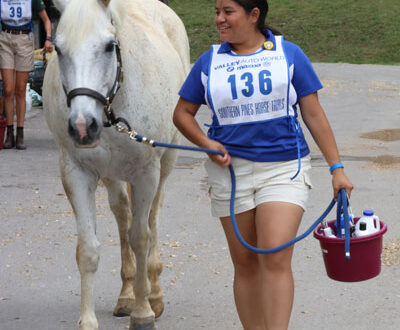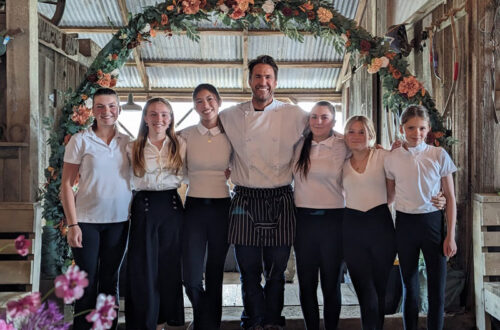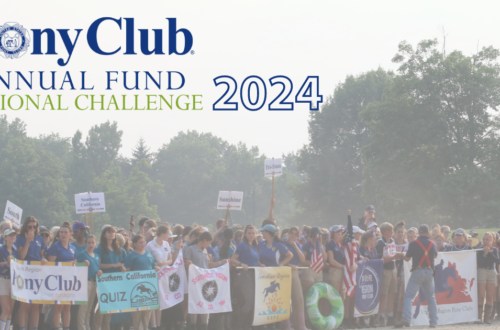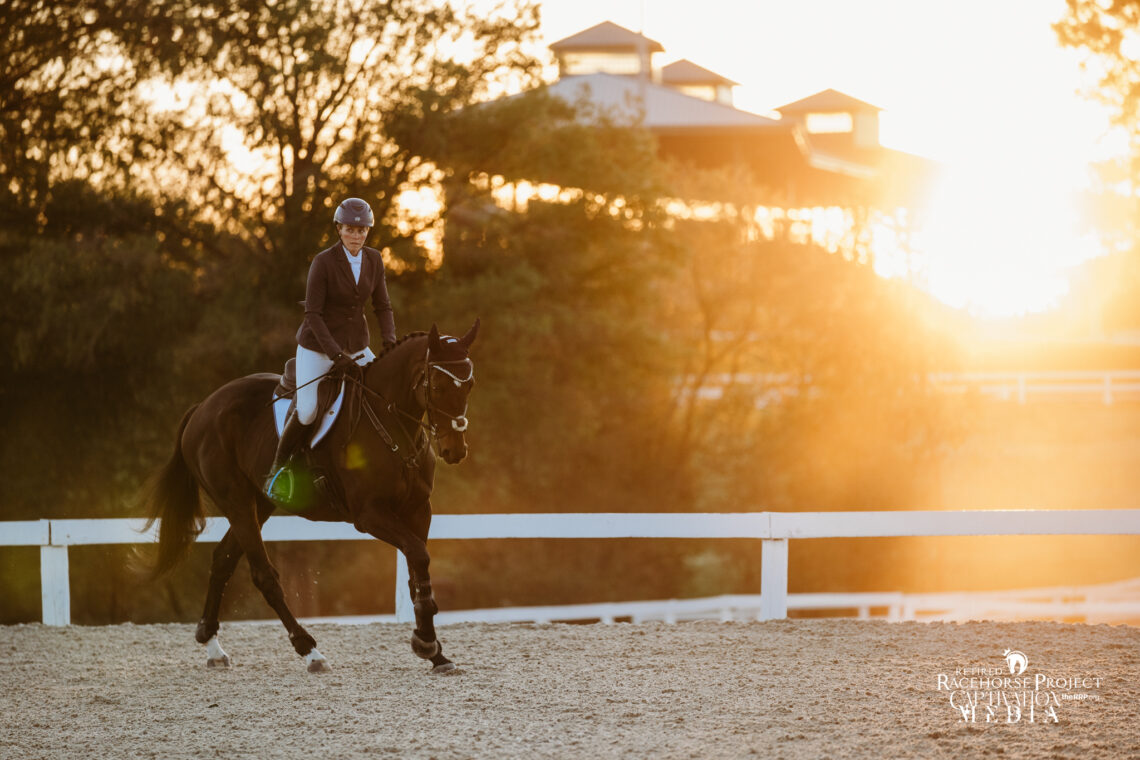
Tips to Help Off-Track Thoroughbreds to Shine in Second Careers
By Elizabeth Moyer, Fundraising and Marketing Coordinator / Photos by Captivation Media, Courtesy of the Retired Racehorse Project
Get off-track Thoroughbred training tips from Pony Club clinician and coach Richard Lamb.
Thoroughbreds are known for their heart and athleticism, and when it comes to the need for speed, the Thoroughbred reigns supreme. But beyond the finish line, retired racehorses, often called off-track Thoroughbreds or OTTBS, can go on to shine in second careers in just about any riding sport or equestrian activity. They also make great Pony Club mounts.
Pony Club clinician and show jumping coach Richard Lamb has been around Thoroughbreds all his life and loves the breed. He is on the board of the Retired Racehorse Project (RRP), which is a partner of the United States Pony Clubs (USPC or Pony Club), and he has served as a repeat volunteer and judge at the RRP’s Thoroughbred Makeover and National Symposium, presented by Thoroughbred Charities of America.
The Retired Racehorse Project was created to assist with the placement of Thoroughbred ex-racehorses into second careers and to grow the demand for them in equestrian sports. The RRP’s Thoroughbred Makeover is the world’s largest retraining competition for recently retired racehorses. Held each October at the Kentucky Horse Park, the event showcases the Thoroughbred’s ability in 10 different disciplines. The RRP also maintains an educational library to empower more equestrians to ride a Thoroughbred and conducts clinics and seminars throughout the country.

If you’re wondering what it takes to transition an off-track Thoroughbred (OTTB) into a second career, or dream of taking one to the Thoroughbred Makeover one day, Lamb has some words of wisdom to share from his years of experience working with Thoroughbreds.
Experience Required
While many Thoroughbreds have gone on to become excellent lesson horses, novice mounts, and even serve as equine-assisted therapy horses, retraining a Thoroughbred fresh off the track is not a task for a green or beginning rider. A green rider and green horse are never an ideal combination, and this scenario seldom works out well, notes Lamb.
In general, he advises a skill level equivalent to a USPC certification level of C-3 and above. However, the most important thing Lamb recommends is finding an experienced person to mentor you and provide support, whether that’s an instructor, a trainer, or someone who has had experience with starting an off-track Thoroughbred.
“They’re not necessarily difficult, but the way I always put it is that the Thoroughbreds have a lot of experience, but they’re not trained. They have a lot of experience because they’ve been racing, they’ve traveled around the country, some have even flown [in a plane], they’re used to machinery, they’re used to horses going all around them, so they have a lot of experiences, but they’re not trained except for one job, and that is to go fast in a big circle, and normally to the left.”
Not only are OTTBs learning a new job, but they also have to adjust to a completely different type of environment and get familiar with a lifestyle off the track, which can take some time.
Off-Track Thoroughbred Tips to Get Started
The first thing Lamb recommends is giving the newly retired racehorse some time off, including turnout with a buddy or companion animal, and creating a routine that will allow him to get used to the quieter pace of life off the track.
“They’ve been used to a lot of handling every single day, and they’ve been used to being around other horses, and stabled next to horses,” he says, adding that those are a few things to keep in mind for a comfortable environment to help ex-racehorses successfully transition from the track.
When it comes to retraining, Lamb takes a clean-slate approach. “Start them from the beginning as if they haven’t been ridden,” he advises.
While many Thoroughbreds ages 3 and up may have had a lot of riding on the track, Lamb says to keep in mind that they haven’t had the type of riding and training or been asked to do the same things sport horses or Pony Club mounts do.
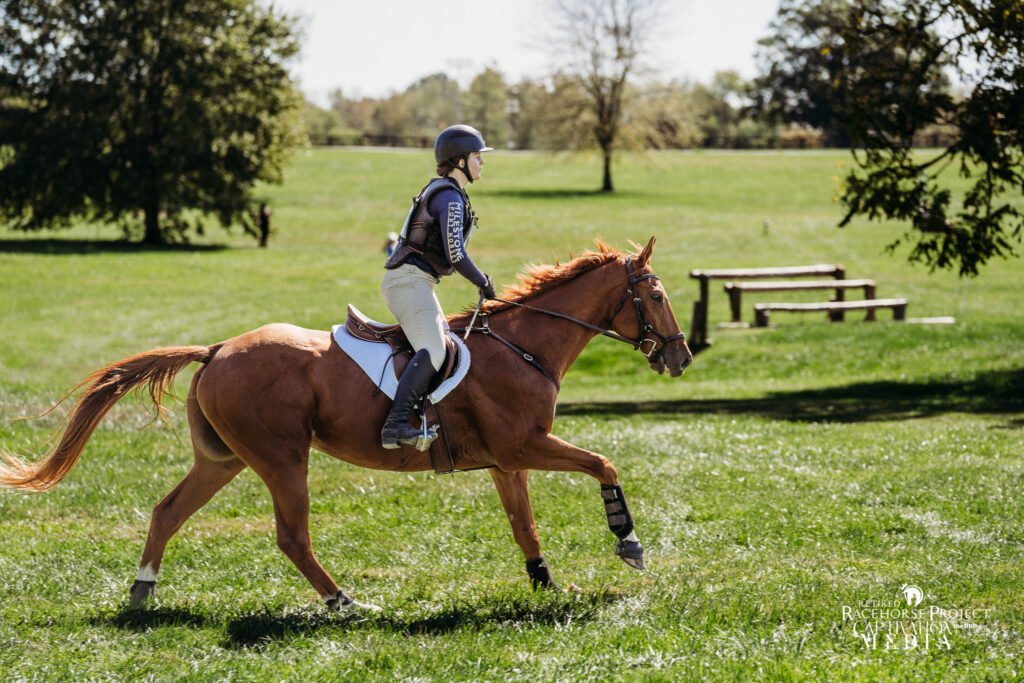
From Racing to Riding
Before you think about getting in the saddle of your newly off-track Thoroughbred, groundwork can be beneficial for bonding and retraining. Lamb suggests longeing, leading them over poles or tarps, and introducing them to a variety of new things and experiences from the ground first.
“A lot of racehorses, when you get on their back, expect to go do something, and their mind and emotions may be, ‘Let’s go! Let’s go!” says Lamb, who adds that OTTBs don’t have a hang-around-and-wait mindset, so that may be one of the first things to work on–getting the horse to be comfortable with waiting to do things.
Since racehorses normally have their riders get a leg up to get on, one specific skill to teach the OTTB is to stand at a mounting block, which can take some time and may require assistance, says Lamb.
“The jockeys are legged up on their backs, and they don’t hang around!” explains Lamb. “That doesn’t mean they take off at a gallop, but the horses know what they’re going to do. They’re going to go out on the track, so that is what they’re used to.”
For this reason, Lamb likes to mix things up for the newly off-track Thoroughbred. Instead of automatically going straight to work in an arena every time, you might ride out into the field or on the trail or hack with a buddy around the ring.
Taking it Slow
The Thoroughbred’s forward-thinking attitude is an asset when it comes to taking on new challenges, but it also should be managed carefully.
“One of the most wonderful things about racehorses is that they are keen to go and do new things,” says Lamb. “They say, ‘Oh that looks like fun; let’s go forward.’ And they go forward and through to new situations and challenges.”
However, it’s important to take your time introducing any new thing or activity. The more time you give a horse to understand what you’re asking, the smoother your progress will be, says Lamb.
Lamb advises that if you go slow in the beginning and give the horse time and space to figure things out, then the horse gains confidence and becomes more comfortable with new things. This provides a better foundation for their training.
“When you give them a really good foundation, they can go on and do any discipline you want because you taught them to whoa and go and turn,” he adds. “They may not understand that in the beginning, so you have to give them time.”
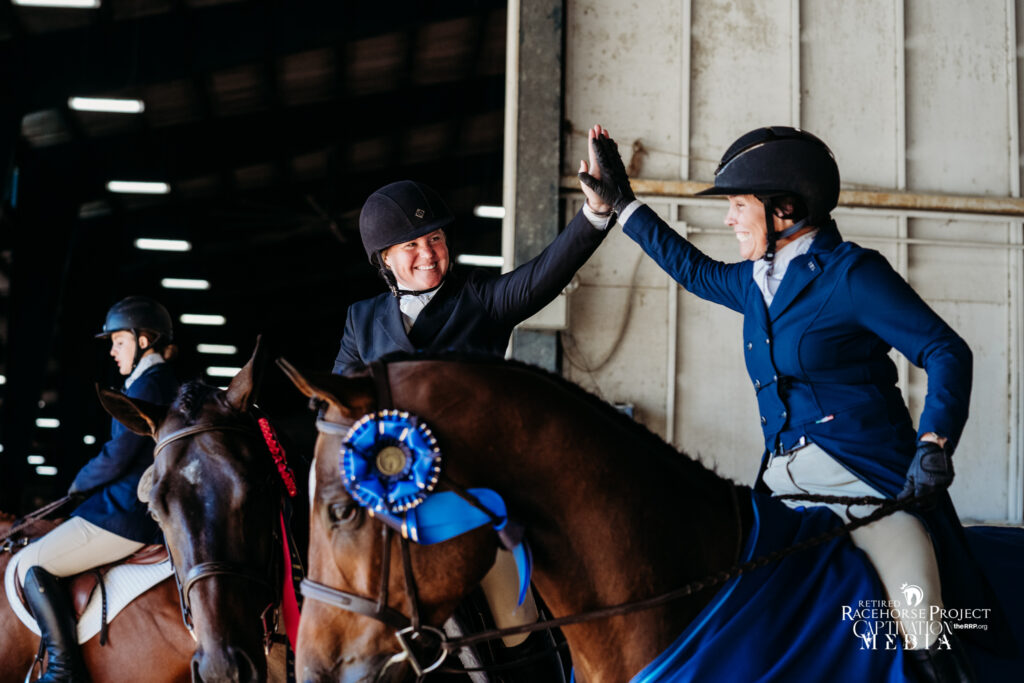
All-Around OTTBs
Fans of off-track Thoroughbreds recognize the breed’s versatility, which is something the Thoroughbred Makeover showcases through its variety of disciplines, which includes everything from barrel racing to ranch and liberty work, as well as the traditional sport horse disciplines of dressage, hunter/jumper, and eventing.
“I like to expose horses to lots of different things, because I want them to be an all- around horse, no matter if they’re more likely to become an eventer or a show hunter or dressage horse,” says Lamb.
A big part of his approach for developing an all-around horse is to get out of the arena and go for trail rides. Lamb also uses the buddy system as much as possible to improve the comfort level for both horse and rider.
“It’s mentally and physically a good thing to do,” he says. “I would do ring work in the beginning, maybe one or two days a week, but then I would try to get them out of the ring and expose them to other things. If they can go out in a group, that’s best, or with a buddy, so that they can be comfortable doing whatever job they’re being asked to do.”
One example for when a buddy horse can show the ex-racehorse what to do is to have an experienced horse and rider cross a stream ahead of the OTTB and his rider.
Learning to become a partner with an ex-racehorse is also important, just as it is with any horse.
“Try to look at the whole process out of the horse’s eyes, not out of your eyes,” says Lamb. “It’s not necessarily what you think the horse should be doing. It’s listening and reading your horse so that you give him time and space, literally and figuratively, to figure out the situation you’re asking of him.”
Finding Your Dream OTTB
For many, the Thoroughbred will always be their breed of choice. Additionally, for those experienced riders who are shopping on a budget, an off-track Thoroughbred can be more reasonably priced than a purpose-bred sport horse.
You can easily search for your perfect OTTB partner without stepping foot on the track or having to have industry connections. The Retired Racehorse Project website makes the search easy with listings of available Thoroughbreds, while the Makeover Marketplace provides a one-stop shop for event attendees searching for their next equine partner.
“If you’re willing to wait until October to buy a horse, when you go to the Thoroughbred Makeover, you will have 400 horses all in one place, all Thoroughbreds, doing 10 different disciplines, and I bet you’ll be able to find at least one horse that you like,” says Lamb, who recommends keeping an open mind and checking out horses in all the disciplines. “Just because they’re [competing] in the one discipline at the Makeover doesn’t mean that’s necessarily what the horse is going to be best at, or that he can’t go on and do something else,” says Lamb. “I know people that have bought horses at the Makeover and they chose them because they thought they had a really good way of moving, or they really liked their attitude and their mind.”
Lamb shares that his favorite horses have always been Thoroughbreds. “I’ve done foxhunting, show jumping, eventing, and dressage, and I’ve ridden Thoroughbreds in all of those,” he adds. “And I’ve also ridden one Thoroughbred in all of those activities! That’s why I like the versatility of the Thoroughbred, because they’re capable of working in the ring and working outside. They’re willing to accept new challenges.”
For more information about the Retired Racehorse Project, visit therrp.org.



